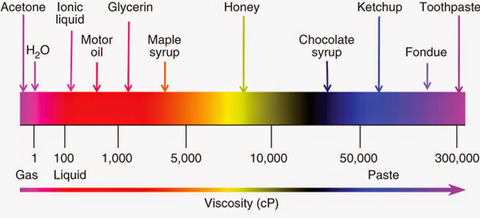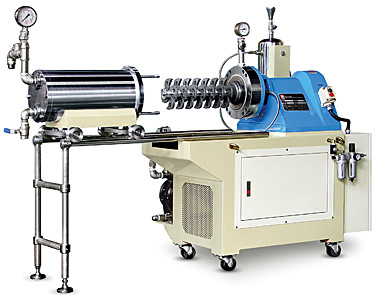Effects of Ball Burnishing Process with Stainless Steel Media
Expectations about manufacturing industries have increased
in recent years. Different mechanical processes such as turning, milling, etc.
they lead to surfaces with inherent irregularities. Therefore, manufacturing
industries face the responsibility of finding improved finishing operations
that nullify these effects and improve other properties in these materials.
Surface plastic deformation processes were created to solve
these impediments. This process does not involve the removal of material, but rather
deforms the surface plastically under compression load. Therefore, it is said
that the surface of the component under this external load is subjected to cold
work.
Burnishing is one of those techniques of surface plastic
deformation. It has been around for a long time and has continued to gain
general acceptance in today's manufacturing industry.
1. What is burnishing?
Burnishing is a process of surface modification through
which smooth surface finishes are achieved. This is possible by planetary rotation
of a tool on a turned surface board. In general, burnishing is a cold work
process that softens, removes discoloration and polishes a metal surface in a
glossy finish that is almost as good as new.
This specifically points to the peaks and valleys contained
in all machines or other processed metal surfaces. The burnishing tool is
applied with a calculated amount of force. This force drives the materials that
until now were at the top to flow into the valleys. This effect will be a
reduction in the height of the peak, as well as in the depth of the valley.
This method was first developed in the United States in the
1930s. The burnish was applied in an attempt to impart residual integral
tension to layers of various metal parts, specifically the railroad, the
automobile axle and the machinery axes. Over the years, it became widely
accepted and has found applications in almost every industry in the world.
2. Types of burnishing
This process can be classified into different types
according to the type of tool used, the geometry of the pieces in which it
works, etc.
Taking into account the geometry of the tools used, the
burnishing is further classified into two groups: ball burnishing and roller
polishing. However, for the purpose of this article, we will consider ball
burnishing, its definition, advantages and application in various industries
and businesses in the world today.
Steel Tumbling Media, catalyst balls, forged steel grinding balls, forged steel balls,ceramic grinding media suppliers, Steel Tumbling Media, zirconium silicate beads,catalyst bed support balls, grinding balls, milling media, shot peening media, grinding media, stainless steel tumbling media, steel tumbling media, alumina grinding balls,zirconium oxide beads, carbon steel balls, chrome steel balls, stainless steel media,stainless media, zirconium beads, alumina ball, bead media, glass bead media, catalyst media, stainless steel balls
Ball polishing: in this type of polishing, one or more
spherical balls are supported on the rod by the hydraulic pressure of a fluid,
a spring or the relative force of the workpiece. The ball is constantly in
contact with the workpiece by means of fluid that circulates through a
hydraulic pump. As the tool feeds along the workpiece, the ball is pressed
against it, resulting in a burnishing operation.
Depending on the desired effect, the strength of the burnish
can be controlled by varying the hydraulic pressure of the fluid.
3. Advantages of ball burnishing
- This process allows to produce pieces with a high control over the dimension and allowing very precise sizes.
- Produces a very smooth surface finish
- It saves costs and is more economical compared to other polishing processes
- Creates improvements in physical properties and increases the life of the components.
4. Benefits of ball burnishing with stainless steel media
Stainless steel media is particularly popular in surface
finishing due to its superior characteristics. This has led him to become the
most preferred and widely accepted in industries around the world.
Below are some inherent characteristics that make stainless
steel media the most commonly used today:
- Greater surface pressure and longer media life
- Shortest Finnish Time
- Improves the pre-plate finish
- Reduces porosity in plated parts
- Economic
4.1 Higher surface pressure and longer media life
If used under appropriate conditions, this medium can last a
long time. Obviously, this is because it is not a worn out means of
communication. It has a high hardness due to its composition of relatively
resistant materials. This feature is excellent for various vibratory flipping
applications.
In addition, there is a minimum generation of solid waste
during this process. Steel that is a non-consumable medium is not used
throughout the operation.
4.2 Shortest Finnish time
Stainless steel turning means are comparatively heavier than
other materials used for this process. This substantial weight exerts greater
pressure on a mass of components in the vibratory, barrel and flipping
finishing equipment. The high surface contact achieved through increased
pressure and resistance of the steel means works effectively to shorten the
operating time.
4.3 Improves the pre-place finish
The parts that seem smooth are characterized by micro
imperfections that cause coating problems. Due to the weight of the steel
means, these small irregularities flatten, preparing a surface for a more
satisfactory coating.
4.4 Reduces porosity in plated parts
When the plated parts are finished with steel turning means,
a compacting action acts downward and extends across the entire surface of the
softer plate to fill any "pinhead" hole. This eliminates porosity and
causes an increase in corrosion resistance created by the coating process.
4.5 Profitable
The durability of stainless steel media is considered a
capital advantage. The finish made with this medium generally lasts longer. The
use of stainless steel shots versus plain steel means eliminates the need for
rust inhibitors.
5. Success stories in the application of stainless steel burnishing
The burnishing of brass components has become an economical
solution to repair the nicks, scrapes and scratches developed by manufacturing.
Companies and companies continue to look for better ways to maximize profits
and reduce costs. Therefore, they have resorted to polishing as a means through
which they can, among other advantages, avoid wear, improve gloss and extend
the life of parts and components of the machine.
a) Brass mounting parts
The brass adjustment parts before the ball polishing surface
are opaque and dark. With the polishing of balls in stainless steel balls, the
surface shines and is cleaned. This product is ready to deliver to the market.
c) Brass stamping parts
- The left parts below are brass parts before ball polishing, and the right part is after ball polishing. After the turning process, the burrs in the drill hole are flattened. The dirt and oxidation layer is also removed.
- These are some results of the application of stainless steel polishing processes.
- Commercial polishing systems have proven useful in extending the shelf life of restaurant businesses.
- Restoration of beauty and brightness in parts and components used in the automotive industry.
- Improvement in parts used in aeronautical industries.
- Repair and restore cutlery and crockery
- Repair and restore metal plates and a large number of other applications.
6. Conclusion
In this article, we discuss the concept of burnishing and
two types of burnishing techniques, which include ball polishing and roller
polishing. In mass finishing, we focus on ball burnishing and its advantages.
Stainless steel turning means are the most used means in the ball polishing
process.
Later, we list 5 benefits for the process. Finally, we give an example
of how the ball polishing process improves the surface conditions of the metal
parts.
If you have any questions or need help finishing the surface
of the parts, do not hesitate to contact us or simply send an email.






